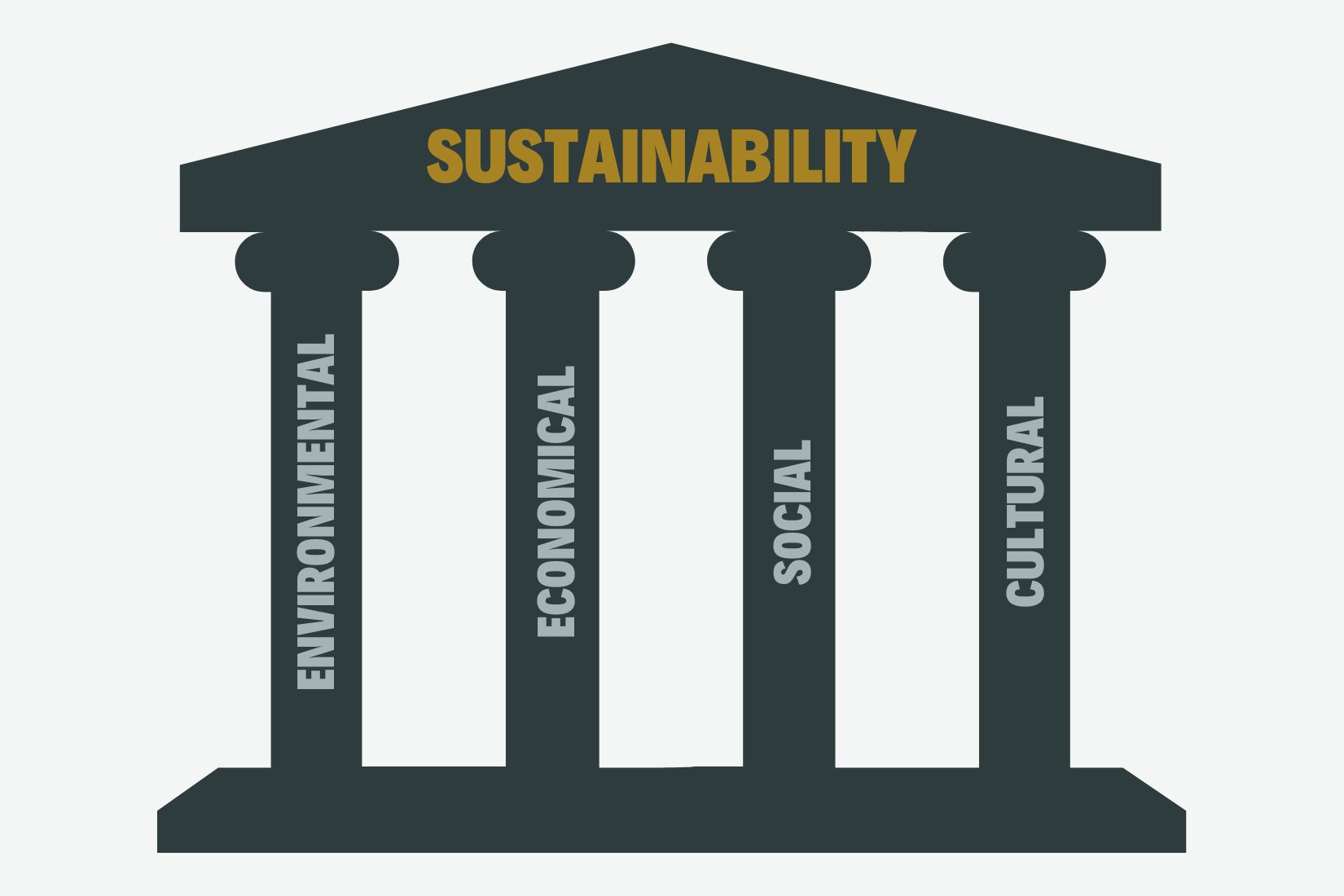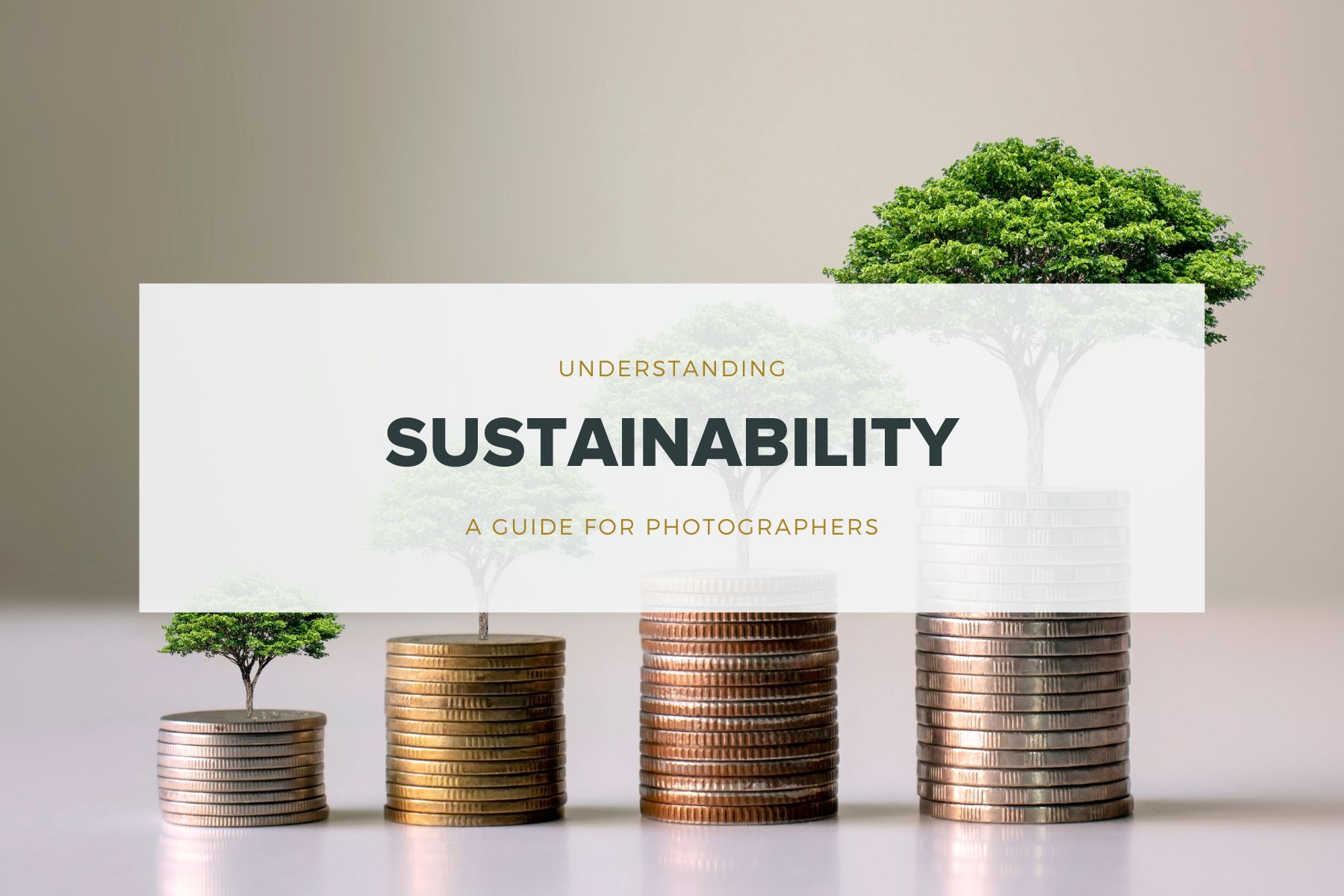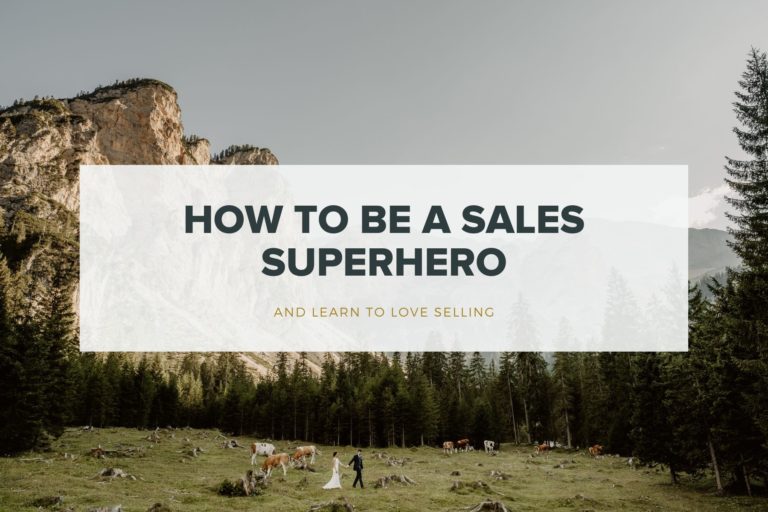Understanding Sustainability – A Guide For Photographers
The term “sustainability” seems to have become another buzzword. Not just in the wedding industry, but in general. But what does sustainability, and running a sustainable photography business actually mean?
When we talk about sustainability as photographers in the wedding industry, we often focus on the topic of environmental sustainability (many photographers are aware of Leave No Trace now), and perhaps the idea of promoting more sustainable options to clients for their weddings (such as seasonal flowers or served food instead of a buffet to reduce waste). But sustainability is a super complex topic that covers many different areas.
Sustainability is like a game of Jenga, where you’re trying to build a tall and stable tower without letting any blocks fall down. In the game of sustainability, the blocks represent different aspects of our world, such as the environment, society, and the economy. To play the game successfully, we need to make sure that we’re not taking away too many blocks from any one aspect, or the tower will collapse. Instead, we need to find a balance between all the different blocks, so that the tower can stand tall and stable for a long time. In other words, sustainability is about finding ways to live and work that don’t harm the environment, society, other cultures or the economy, but instead support them in a balanced and harmonious way.
Sustainability is just as important for us as small business owners as it is for the wider world. By adopting sustainable practices, we, as photographers, can not only reduce our environmental impact, but also improve our reputations, attract more customers, and increase our profits in the long run.

4 Pillars of Sustainability
I was first introduced to the Four Pillars Of Sustainability during my hiking guide training. We spent a day exploring the different areas of sustainability, and how they related to us as outdoor guides. So much of what I learned was also super relevant to the world of wedding and elopement photography too, especially when thinking about destination weddings and elopements.
The four pillars of sustainability, also known as the four dimensions or quadruple bottom line, are the following:
- Environmental sustainability: This pillar focuses on the natural world, including the air, water, land, and biodiversity. It involves protecting natural resources, reducing waste and pollution, and promoting renewable energy sources.
- Economic sustainability: This pillar focuses on the economy, including issues related to business and industry. It involves creating a healthy economy that provides jobs, supports innovation, and promotes sustainable practices that do not harm the environment or society.
- Social sustainability: This pillar focuses on people and society, including issues related to social justice, equity, and human rights. It involves ensuring that basic needs are met, such as access to healthcare, education, and housing, and promoting inclusive and diverse communities.
- Cultural sustainability: This pillar focuses on cultural diversity and heritage, including issues related to preserving cultural traditions and promoting cultural exchange. It involves valuing and respecting different cultures and working to ensure that they are not lost or marginalized.
Together, these four pillars form a framework for sustainable development, which seeks to meet the needs of the present without compromising the ability of others, including future generations to meet their own needs.
This blog post delves into each of these sustainability pillars – environmental, economic, social, and cultural – providing you with valuable insights into how they relate to your business. Uncover the rewards and tactics linked to each sustainability component, granting you the information required for forming a more sustainable business approach that sustains long-term success while respecting our planet’s natural resources.
Prepare yourself for an enlightening journey through the intricacies of sustainability explained within the context of photography. You’ll discover practical tips on integrating greener technologies, fostering social capital by supporting local charities or initiatives, and embracing cultural aspects in your work – all aimed at achieving that ultimate goal: creating a truly sustainable business that thrives now and for generations to come.

Pillar 1 – Environmental Sustainability
Comprehending the idea of environmental sustainability is essential for photographers who desire to have a positive influence on the environment while managing their business. In this part, we’ll go over the significance of eco-sustainability for wedding snappers, analyze its advantages and furnish techniques to incorporate it into your photographic business.
Definition of Environmental Sustainability
Environmental sustainability refers to responsible resource use that meets present needs without compromising future generations’ ability to meet their own needs. For photographers, this means adopting practices that minimize waste and pollution while conserving energy and natural resources.
Why Is Environmental Sustainability Important?
- Reduce your impact on the planet: Our planet is under huge strain and every small step we can take, both as individuals and businesses to reduce our impact on the natural environment can help.
- Eco-friendly image: Embracing environmentally sustainable practices can enhance your brand’s reputation among eco-conscious clients who value businesses with a green ethos.
- Cutting costs: Implementing energy-efficient measures or reducing waste can lead to long-term cost savings in terms of lower utility bills and reduced material expenses.
- Innovation: Adopting sustainable solutions may encourage you to think creatively about how you run your business, leading to new ideas and innovations that set you apart from competitors.
- Better working environment: A greener workspace can improve your well-being by providing cleaner air quality or more natural light through energy-efficient windows.
Strategies for Implementing Environmental Sustainability in a Photography Business
- Digital workflows: Migrating towards digital contracts, invoices, proofs instead of paper-based methods reduces waste production significantly. Digital workflows also streamline your business processes, making them more efficient.
- Energy-efficient equipment: Choose photography gear and accessories made from sustainable materials or designed with energy efficiency in mind. For example, opting for rechargeable batteries where possible, re-using memory cards, and buying refurbished/second-hand equipment instead of new.
- Reducing travel: Reduce travel where possible, and when not possible, prioritize eco-friendly transportation options when traveling to photoshoot locations or meetings. This could include carpooling with other photographers to conferences or events, using public transport, or even biking if feasible.
- Sustainable products & packaging: Consider offering digital-only packages. For printed products, switch to companies that use sustainable production methods and recyclable or biodegradable packaging materials when delivering prints and albums to clients. Have printed products shipped directly to clients rather than to you and then shipped onward.
- Practicing Leave No Trace: Many photographers now understand the principles of Leave No Trace, but there are still many who don’t. Always consider your actions and the impacts they might have on the environments and communities you visit.
Incorporating environmental sustainability into your photography business not only benefits the planet but can also lead to cost savings and a unique selling point that sets you apart from competitors. By understanding its importance and implementing strategies like adopting digital workflows, choosing eco-friendly equipment, opting for green travel options, and using sustainable packaging materials – you’ll be well on your way toward running a greener photography business.
Considering environmental factors is essential for a thriving photography venture, as it can lead to cost savings and increased earnings. Economic sustainability is the next pillar of sustainability that should be explored in order to ensure long-term success for any photographer’s business.

Pillar 2 – Economic Sustainability
Economic sustainability is a crucial aspect of running a successful photography business. In this section, we will explore the concept of economic sustainability, its benefits for wedding photographers, and strategies to implement it in your photography business.
Definition of Economic Sustainability
Economic sustainability refers to the ability of a business or an economy to maintain growth and profitability over time without compromising future resources or opportunities. Photographers can promote economic sustainability by operating their businesses in a financially responsible manner.
Why Is Economic Sustainability Important?
- Financial Stability: By adopting economically sustainable practices in your photography business, you can ensure steady income streams that allow you to invest back into your business while also securing your financial future.
- Creating Income For Others: As your business grows, you may choose to hire a team or outsource, creating income for others.
- Paying Taxes: Nobody likes paying taxes, but taxes support education, healthcare, and infrastructure, and help to contribute to the overall economic growth of society.
In short, economic sustainability is important because it helps to create a stable and prosperous business environment that benefits individuals, communities, and the environment in the long run.
Strategies for Implementing Economic Sustainability in a Photography Business
- Create Multiple Revenue Streams: Diversify your income sources by offering additional services.
- Outsource Non-Core Tasks: Focus on what you do best – capturing stunning wedding photos – by outsourcing tasks like accounting, marketing, or editing to professionals who specialize in those areas. By outsourcing certain duties to experts, you can make sure that quality work is being done while also freeing up time for activities that bring in money.
- Pricing for Profit: Know your numbers and make sure your business is profitable. Refrain from offering discounts or undercutting the market.
- Support other local and sustainable businesses: Photographers can support sustainability by working with eco-friendly vendors, through referrals or promoting local, sustainable businesses on their website and social media channels.
Incorporating economic sustainability into your photography business not only helps secure its long-term success but also contributes positively towards a more sustainable future for everyone involved. By utilizing these approaches, you can form a financially sustainable structure that is advantageous for both yourself and the environment.
By implementing economic sustainability, wedding photographers can ensure their businesses are financially sound and profitable. Next, we will discuss the importance of social sustainability for professional wedding photographers.

Pillar 3 – Social Sustainability
The social aspect of sustainability, which is one of the four pillars, emphasizes the importance of peace, enhancing social connections, inclusivity, and equality.
Definition of Social Sustainability
Social sustainability refers to creating and maintaining healthy relationships within society while promoting well-being, equity, diversity, and justice. In the context of wedding photography businesses, this means fostering positive connections with clients, employees or contractors (if any), suppliers/vendors as well as other industry professionals.
Why is Social Sustainability Important?
- Better client relationships: By being socially responsible and engaging with clients on a deeper level beyond just providing services, you can build trust that leads to stronger client loyalty and referrals.
- Inclusive work environment: Embracing diversity among team members not only promotes creativity but also helps create an inclusive workplace where everyone feels valued – which can lead to increased productivity.
- Ethical practices: Adhering to ethical standards in all aspects – from pricing policies to treatment of staff – ensures long-term success by establishing credibility within the industry.
- Promoting local communities: Collaborating with local vendors supports small businesses in your community while building valuable professional networks that can benefit both parties involved.
Strategies for Implementing Social Sustainability in a Photography Business
- Create open communication channels: Encourage honest feedback from clients through surveys. This will help identify areas where improvements are needed while also demonstrating genuine care about their experience.
- Prioritize diversity and inclusion: Be conscious about hiring diverse team members, collaborating with vendors from different backgrounds, showcasing diversity in your portfolio and using inclusive language. This can help attract clients who value inclusivity. When creating shoots with models from underrepresented groups, avoid tokenizing, and pay them a fair wage for their work.
- Volunteering time or charitable donations: Consider how you business could give back to support your local community. Whether that’s offering photography services to a local charity or supporting a cause with a financial donation.
- Building a local community: Partnering with local vendors not only supports your community but also helps create a network of professionals that may lead to future collaborations or referrals. Attend networking events or join online forums dedicated to wedding professionals or creative service businesses within your area as an effective way of building connections.
Incorporating social sustainability into your photography business will not only strengthen relationships within the industry but also contribute positively to society at large – ultimately leading to long-term success and growth for both you and those around you.

Pillar 4 – Cultural Sustainability
Finally, let’s take a look at cultural sustainability, another important pillar in creating a more sustainable business and future.
Definition of Cultural Sustainability
Cultural sustainability is an essential aspect that ensures the preservation and promotion of cultural values, traditions, heritage, diversity, creativity, and identity within communities. It plays a vital role in maintaining social cohesion while contributing to sustainable development. In the context of wedding photography businesses, cultural sustainability involves respecting diverse customs and practices during weddings while capturing unique moments that reflect each couple’s culture.
Why Is Cultural Sustainability Important?
- Inclusivity: By embracing cultural sustainability principles in your photography business operations, you create an inclusive environment where clients from various backgrounds feel respected and valued. This approach can help attract more customers seeking culturally sensitive services.
- Differentiation: Incorporating cultural sensitivity into your work helps set you apart from competitors who may not prioritize this aspect. Showcasing a diverse portfolio with images reflecting different cultures demonstrates your commitment to promoting inclusivity through your artistry.
- Social Capital: Building strong relationships with clients by understanding their needs related to their culture contributes positively towards building social capital – which ultimately enhances reputation as well as customer loyalty among future generations.
- Growth Opportunities: Embracing different cultures provides opportunities for growth by expanding your clientele base across various demographics or geographical locations interested in preserving their rich heritage through photographs captured at weddings or other significant events.
Strategies for Implementing Cultural Sustainability in a Photography Business
- Educate Yourself: Learn about the customs, traditions, and practices of different cultures to better understand their significance. Attend workshops or seminars on cultural sensitivity or engage with experts from diverse backgrounds to broaden your knowledge.
- Collaborate with Local Communities: Whether at home or with destination weddings, partner with local community organizations that promote cultural preservation and awareness. By supporting these initiatives, you contribute towards fostering cultural sustainability while also gaining insights into various communities’ values and beliefs.
- Showcase Diversity in Your Portfolio: Ensure your portfolio reflects the diversity of clients you have worked with by including images capturing unique aspects of each culture represented. This not only demonstrates your commitment to promoting inclusivity but also helps potential clients visualize how their own wedding might be captured through your lens.
- Promote Cultural Sensitivity within Your Team: Encourage team members to adopt culturally sensitive practices during weddings by providing training opportunities focused on understanding different customs and traditions as well as respecting privacy concerns related to specific rituals.
Incorporating cultural sustainability into your photography business model is essential for creating an inclusive environment where all clients feel respected and valued. By implementing strategies like educating yourself about diverse cultures, collaborating with local communities, promoting cultural preservation, and showcasing diversity in portfolios, photographers can ensure they are playing their part in preserving our world’s rich heritage for future generations.
Conclusion
As you can see, sustainability is a multi-layered approach. By incorporating sustainable practices into your business operations, photographers can not only help create a more sustainable world but also improve the health and longevity of your own businesses.







